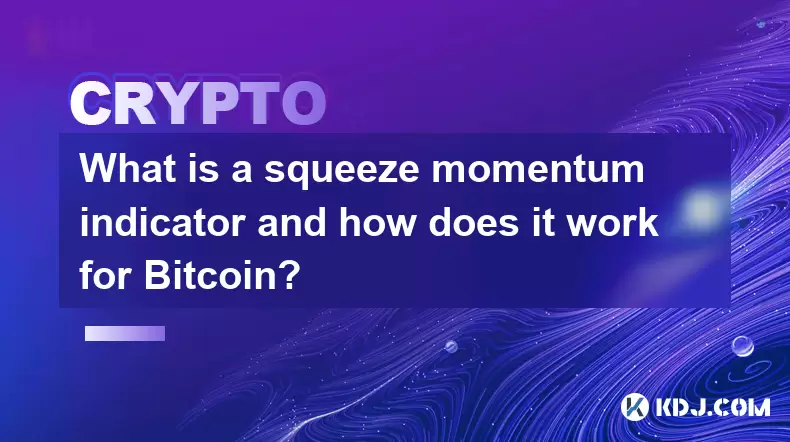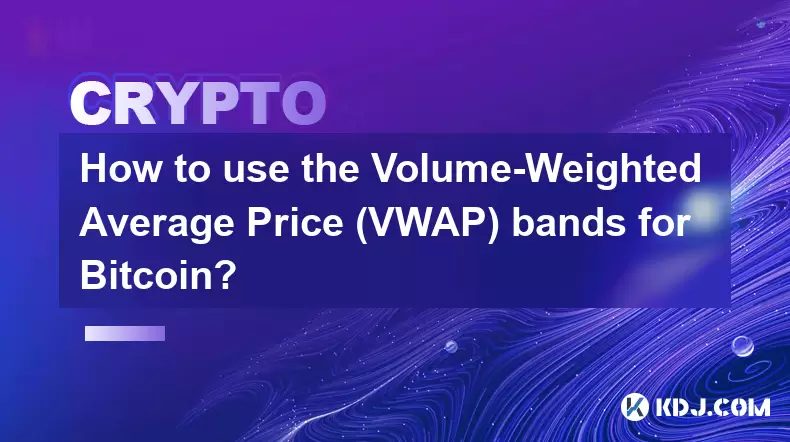-
 Bitcoin
Bitcoin $108,228.4534
-0.75% -
 Ethereum
Ethereum $2,524.8743
-1.10% -
 Tether USDt
Tether USDt $1.0003
-0.01% -
 XRP
XRP $2.2250
-0.63% -
 BNB
BNB $656.0016
-0.57% -
 Solana
Solana $148.4911
-1.36% -
 USDC
USDC $1.0000
0.00% -
 TRON
TRON $0.2846
-0.95% -
 Dogecoin
Dogecoin $0.1646
-1.38% -
 Cardano
Cardano $0.5767
-1.03% -
 Hyperliquid
Hyperliquid $39.3026
0.80% -
 Sui
Sui $2.9291
0.05% -
 Bitcoin Cash
Bitcoin Cash $483.6554
0.19% -
 Chainlink
Chainlink $13.2526
-1.01% -
 UNUS SED LEO
UNUS SED LEO $9.0390
-0.17% -
 Avalanche
Avalanche $17.9293
-1.10% -
 Stellar
Stellar $0.2376
-1.15% -
 Toncoin
Toncoin $2.7533
-1.89% -
 Shiba Inu
Shiba Inu $0.0...01149
-0.80% -
 Hedera
Hedera $0.1563
0.26% -
 Litecoin
Litecoin $86.7275
-1.92% -
 Monero
Monero $311.5944
-2.47% -
 Polkadot
Polkadot $3.3741
-1.97% -
 Dai
Dai $1.0000
0.01% -
 Ethena USDe
Ethena USDe $1.0002
0.00% -
 Bitget Token
Bitget Token $4.4043
-1.32% -
 Uniswap
Uniswap $7.0131
-4.90% -
 Aave
Aave $274.3481
1.75% -
 Pepe
Pepe $0.0...09808
0.11% -
 Pi
Pi $0.4677
-3.26%
What does Bitcoin halving mean? What impact does it have on prices?
Bitcoin halving, occurring every 4 years, cuts miners' rewards in half, aiming to increase scarcity and value, with historical data showing price surges post-halving.
May 09, 2025 at 11:08 am

What is Bitcoin Halving?
Bitcoin halving is a pre-programmed event in the Bitcoin protocol that occurs approximately every four years, or after every 210,000 blocks are mined. The primary purpose of halving is to control the supply of new bitcoins entering the market, thereby ensuring the cryptocurrency's scarcity and, theoretically, its value over time. During a halving event, the reward that miners receive for successfully mining a block is cut in half. This mechanism was introduced by Bitcoin's creator, Satoshi Nakamoto, to mimic the scarcity of precious metals like gold.
How Does Bitcoin Halving Work?
The process of Bitcoin halving is straightforward but has profound implications. Initially, miners were awarded 50 bitcoins per block when Bitcoin was launched in 2009. The first halving occurred in November 2012, reducing the reward to 25 bitcoins per block. The second halving happened in July 2016, bringing the reward down to 12.5 bitcoins. The most recent halving took place in May 2020, where the reward was further reduced to 6.25 bitcoins. The next halving is expected to occur in 2024, reducing the reward to 3.125 bitcoins per block.
Impact of Bitcoin Halving on Prices
The impact of Bitcoin halving on prices is a topic of much debate and speculation within the cryptocurrency community. Historically, Bitcoin halvings have been followed by significant price increases. There are several reasons for this phenomenon:
- Reduced Supply: When the block reward is halved, the rate at which new bitcoins are created slows down. This reduction in supply, if demand remains constant or increases, can lead to higher prices.
- Increased Scarcity: The anticipation of reduced supply often leads to increased demand as investors and traders buy in anticipation of future price increases.
- Market Sentiment: Halving events often generate significant media attention and can lead to a surge in interest and investment in Bitcoin.
Historical Data on Bitcoin Halving and Price Movements
Examining past halving events provides valuable insights into how the market has reacted. After the first halving in November 2012, Bitcoin's price rose from around $12 to over $1,000 by the end of 2013. Following the second halving in July 2016, Bitcoin's price increased from approximately $650 to nearly $20,000 by the end of 2017. The third halving in May 2020 saw Bitcoin's price surge from around $8,000 to over $60,000 in the following year.
Factors Influencing Price Movements Post-Halving
While halving events have historically been followed by price increases, several factors can influence the extent and duration of these movements:
- Market Conditions: The overall state of the cryptocurrency market and broader financial markets can significantly impact Bitcoin's price. Bullish market conditions can amplify the effects of a halving, while bearish conditions can dampen them.
- Investor Sentiment: The behavior of investors and traders, influenced by media coverage and market analysis, plays a crucial role in price movements. Positive sentiment can lead to increased buying pressure, pushing prices higher.
- Regulatory Environment: Changes in regulations affecting cryptocurrencies can impact investor confidence and market dynamics. Positive regulatory news can boost prices, while negative developments can lead to sell-offs.
Other Considerations and Potential Risks
It's important to note that while Bitcoin halving can lead to price increases, it is not a guaranteed outcome. Several risks and considerations should be taken into account:
- Volatility: The cryptocurrency market is known for its high volatility, and halving events can exacerbate price fluctuations.
- Mining Economics: As the block reward decreases, mining becomes less profitable, which can lead to some miners shutting down their operations. This can impact the security and decentralization of the Bitcoin network.
- Alternative Cryptocurrencies: The rise of other cryptocurrencies can divert investment away from Bitcoin, potentially mitigating the impact of halving on its price.
Frequently Asked Questions
Q: How does Bitcoin halving affect miners?
A: Bitcoin halving directly impacts miners by reducing the number of bitcoins they receive as a reward for mining each block. This reduction can make mining less profitable, especially for those with higher operational costs. Miners may need to upgrade their equipment or seek more efficient mining solutions to remain profitable. Additionally, the reduced reward can lead to increased competition among miners, potentially resulting in a more centralized mining landscape.
Q: Can Bitcoin halving lead to a decrease in the Bitcoin network's security?
A: Yes, Bitcoin halving can potentially lead to a decrease in the network's security. As the block reward decreases, some miners may find it unprofitable to continue mining, which can reduce the total hash rate of the network. A lower hash rate means the network is less secure against 51% attacks, where a group of miners could theoretically control the majority of the network's mining power and alter transactions.
Q: Is there a way to predict Bitcoin's price movements after a halving?
A: Predicting Bitcoin's price movements after a halving is challenging due to the many variables involved. While historical data shows that halvings have often been followed by price increases, the cryptocurrency market is influenced by numerous factors, including market sentiment, regulatory changes, and global economic conditions. Analysts often use technical analysis, historical trends, and fundamental analysis to make educated guesses, but no method can predict price movements with certainty.
Q: How do Bitcoin halvings affect the overall supply of Bitcoin?
A: Bitcoin halvings directly impact the rate at which new bitcoins are created and added to the total supply. With each halving, the number of new bitcoins entering circulation is reduced by half, which slows down the growth of the total supply. This mechanism is designed to eventually cap the total supply of Bitcoin at 21 million, ensuring its scarcity and potential value over time.
Disclaimer:info@kdj.com
The information provided is not trading advice. kdj.com does not assume any responsibility for any investments made based on the information provided in this article. Cryptocurrencies are highly volatile and it is highly recommended that you invest with caution after thorough research!
If you believe that the content used on this website infringes your copyright, please contact us immediately (info@kdj.com) and we will delete it promptly.
- Bitcoin, Ripple, and TPS: A New Sheriff in Town?
- 2025-07-05 19:16:07
- Bitcoin Investment: Will You 10x by 2030?
- 2025-07-05 19:16:07
- BONK on Solana: Meme Coin Mania or the Real Deal?
- 2025-07-05 19:16:08
- PEPE Coin, Neo Pepe, and Market Makers: Decoding the Latest Crypto Moves
- 2025-07-05 19:16:08
- BONK Price Rockets: ETF Buzz Sparks Rally and Breakout!
- 2025-07-05 19:16:10
- BONK Price Rockets: Rally, Breakout, and What's Next for the Meme Coin
- 2025-07-05 19:16:10
Related knowledge

What is the Woodies CCI indicator and can it be used for Bitcoin?
Jul 04,2025 at 05:14pm
Understanding the Woodies CCI IndicatorThe Woodies CCI indicator is a variation of the traditional Commodity Channel Index (CCI), which was originally developed by Donald Lambert. The standard CCI measures the current price level relative to an average price over a given period, typically 14. However, the Woodies version modifies this calculation to mak...

How to use indicators to trade the opening range breakout for Bitcoin CME futures?
Jul 05,2025 at 07:35pm
What Is the Opening Range Breakout Strategy?The opening range breakout (ORB) strategy is a popular trading technique used in both traditional markets and cryptocurrency futures, particularly for Bitcoin on the CME. This method involves identifying a specific price range formed during the early phase of a trading session and then taking positions when th...

What does a bearish cross on the Stochastic RSI mean for Bitcoin?
Jul 05,2025 at 07:18pm
Understanding the Stochastic RSI IndicatorThe Stochastic RSI (Relative Strength Index) is a momentum oscillator used in technical analysis to identify overbought or oversold conditions in an asset's price. It combines two well-known indicators — the RSI and the Stochastic Oscillator — to provide more nuanced signals than either could alone. The Stochast...

What is a squeeze momentum indicator and how does it work for Bitcoin?
Jul 05,2025 at 07:32pm
Understanding the Squeeze Momentum IndicatorThe Squeeze Momentum Indicator is a technical analysis tool used by traders to identify potential breakout opportunities in financial markets, including cryptocurrencies like Bitcoin. It was developed by John Carter and is widely used among active traders who seek to capture volatility expansions after periods...

How to use the Volume-Weighted Average Price (VWAP) bands for Bitcoin?
Jul 04,2025 at 04:28pm
Understanding the Basics of VWAP BandsThe Volume-Weighted Average Price (VWAP) is a key metric used in trading to determine the average price at which an asset, such as Bitcoin, has traded throughout the day. It takes into account both volume and price, making it more reliable than a simple moving average. VWAP bands are essentially standard deviation c...

How to code a simple MACD crossover strategy for Bitcoin in Pine Script?
Jul 05,2025 at 07:18pm
Understanding the MACD Indicator in Cryptocurrency TradingThe Moving Average Convergence Divergence (MACD) is a popular technical indicator used across various financial markets, including cryptocurrency. It helps traders identify potential trend reversals and momentum shifts by comparing two moving averages. In the context of Bitcoin trading, the MACD ...

What is the Woodies CCI indicator and can it be used for Bitcoin?
Jul 04,2025 at 05:14pm
Understanding the Woodies CCI IndicatorThe Woodies CCI indicator is a variation of the traditional Commodity Channel Index (CCI), which was originally developed by Donald Lambert. The standard CCI measures the current price level relative to an average price over a given period, typically 14. However, the Woodies version modifies this calculation to mak...

How to use indicators to trade the opening range breakout for Bitcoin CME futures?
Jul 05,2025 at 07:35pm
What Is the Opening Range Breakout Strategy?The opening range breakout (ORB) strategy is a popular trading technique used in both traditional markets and cryptocurrency futures, particularly for Bitcoin on the CME. This method involves identifying a specific price range formed during the early phase of a trading session and then taking positions when th...

What does a bearish cross on the Stochastic RSI mean for Bitcoin?
Jul 05,2025 at 07:18pm
Understanding the Stochastic RSI IndicatorThe Stochastic RSI (Relative Strength Index) is a momentum oscillator used in technical analysis to identify overbought or oversold conditions in an asset's price. It combines two well-known indicators — the RSI and the Stochastic Oscillator — to provide more nuanced signals than either could alone. The Stochast...

What is a squeeze momentum indicator and how does it work for Bitcoin?
Jul 05,2025 at 07:32pm
Understanding the Squeeze Momentum IndicatorThe Squeeze Momentum Indicator is a technical analysis tool used by traders to identify potential breakout opportunities in financial markets, including cryptocurrencies like Bitcoin. It was developed by John Carter and is widely used among active traders who seek to capture volatility expansions after periods...

How to use the Volume-Weighted Average Price (VWAP) bands for Bitcoin?
Jul 04,2025 at 04:28pm
Understanding the Basics of VWAP BandsThe Volume-Weighted Average Price (VWAP) is a key metric used in trading to determine the average price at which an asset, such as Bitcoin, has traded throughout the day. It takes into account both volume and price, making it more reliable than a simple moving average. VWAP bands are essentially standard deviation c...

How to code a simple MACD crossover strategy for Bitcoin in Pine Script?
Jul 05,2025 at 07:18pm
Understanding the MACD Indicator in Cryptocurrency TradingThe Moving Average Convergence Divergence (MACD) is a popular technical indicator used across various financial markets, including cryptocurrency. It helps traders identify potential trend reversals and momentum shifts by comparing two moving averages. In the context of Bitcoin trading, the MACD ...
See all articles

























































































